
飯田
Iida
4.59
Imperial Palace Area
「Japanese Cuisine」
50,000-59,999円
--
Opening hours: 18:00 - 20:00 (by appointment only)
Rest time: non-scheduled holiday
京都府京都市中京区姉小路富小路西入ル南側
Photos
(20)



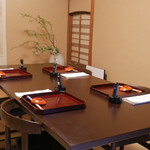






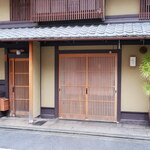
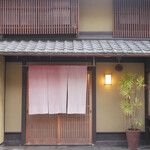








Details
Awards
Reservation Info
(on) a subscription basis
Payment Method
Credit cards not accepted
Number of Seats
10 seats
(6 seats at counter, 4 seats at tatami room)
Private Dining Rooms
Yes
(Yes (4 people allowed)
Smoking and Non-Smoking
No smoking at the table
Facilities
Counter seating available, tatami room available
Drink
Sake and wine available
Comments
(21)
虎太郎がゆく
4.50
It has been 3 and a half years since I last visited Iida-san's restaurant. It was my first time visiting during this time of the year. In May, they had special dishes inspired by Children's Day, such as sushi shaped like chimaki and eel wrapped in nori. The dishes were impressively beautiful and had a deep, rich flavor. While the dishes were not flashy, they were luxurious in their simplicity. The high-end ingredients used in the dishes were a stark contrast to the flashy, showy dishes that are no longer popular. A Japanese cuisine chef sitting next to me was also in awe throughout the meal (laughs). [May 2023 Omakase Menu] ★ Clear tofu with thin beans and abalone in a thin bean pod jelly ★ Fried carp with mugwort noodles in a bowl ★ Akashi's horse mackerel sashimi with watercress ohitashi ★ Bonito tataki with garlic, myoga, and mustard ★ Tai sushi shaped like chimaki with fava beans ★ Grilled young ayu with tade vinegar ★ Eel wrapped in nori ★ Softshell turtle jelly with sea urchin ★ Beef and butterbur hot pot with sansho pepper ★ Tamajime from hot pot broth ★ Rice dream pika ★ Eggplant with spicy miso ★ Warabimochi ice cream with candy art, kyonatsu jelly, cherries ★ Grilled kashiwa mochi (Drinks) ★ Bottled beer ★ Sake (Isomiman, Kokuryu both Junmai Daiginjo) Bill: Approximately 53,000 yen


グルメ王yuta
4.80
Representing Kyoto, which has won the Michelin three stars multiple times, this Japanese restaurant has also won the Foodlog Award 2023 GOLD. They have been consistently winning GOLD for many years, showing how highly they are valued and loved by gourmets nationwide. I was finally able to visit this highly anticipated restaurant, Iida-san, thanks to my gourmet friends. Located a 3-minute walk from Kyoto City Hall Station, the restaurant exudes the essence of Kyoto on Nijo-dori. The interior has 6 counter seats and 4 private table seats, and this time we enjoyed our meal in a private room. Photography was not allowed, so we focused on enjoying the meal. The attention to detail in the dishes, the space, and the service was all perfect. I can see why everyone wants to visit from all over the country each time. I visited in August this time. Course content including drinks: 55,000 yen ・Aperitif: Sweet sake ・Sesame tofu with bonito broth ・Akou sashimi ・Grilled sushi of natural ayu ・Uni, Man'nenji pepper, soba ・Grilled eel with real sansho pepper ・Jellyfish, eggplant, sand beans and sesame dressing, jade ginkgo nut ・Hairy crab sauce with winter melon ・Rice cooked in a clay pot, pickles, red miso soup ・Water yokan ・Mango juice ・Soba tea [Gourmet account] Followed by over 120,000 people on Instagram @nozawayuta TikTok @yuuta0104gurume I would be grateful if you could also follow them together. ^_^ https://instagram.com/nozawayuuta?r=nametag

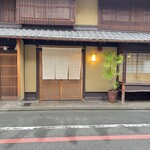
京都のグルメ坊主
4.90
Iida. It is a Japanese restaurant that offers deeply delicious dishes that highlight the ingredients to the maximum. I have been fortunate enough to dine at this restaurant, and this time, it was truly exceptional. The quality of the food can be compared to a top-tier gourmet magazine, and I was amazed by how they were able to elevate the dishes to such a level. While the dishes may vary day by day, the fact that they can change so much was intriguing and even entertaining.

レビューメーカー
4.60
I visited in June. It was themed around warding off bad luck due to it being the month of Minazuki. This restaurant is highly praised, with some even saying that if you haven't been to Iida, you shouldn't call yourself a reviewer. This time, I dined in a private room, and it was a wonderful experience with a great atmosphere and attentive service.


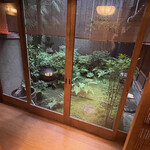

fulcrum
5.00
This time, at Mr. Iida's restaurant, we enjoyed dishes such as yuba tofu, okra hamo with green plums, amate karei Ise lobster in a colorful Rozenjin bowl, eel persimmon leaf sushi, sweet potato and lotus root pickles, sesame miso dengaku Kamo eggplant, Ayu from Azumigawa with corn tamajime and moistened greens, fried kiss fish crackers, asparagus kuzenasu, mannan chili, koimo, and myoga simmered dish, sun egg, grapefruit sherbet, and Kodama watermelon. I am very satisfied today! Looking forward to the next visit!




すっちゃら
5.00
I had the wonderful opportunity to dine at the renowned Japanese restaurant "Iida" in Kyoto, which is usually only open to regular customers. The restaurant was reserved exclusively for our group, and it was such an exciting experience. I am not allowed to share photos of the food, so I will just enjoy the memories. We were treated to a bottle of champagne by a gentleman, and my friend and I enjoyed it together. The food was exceptional, even surpassing the high-quality champagne we were served. The menu included dishes like waterless tofu with sea urchin, grated okra, red bean jelly, plum wine, conger eel and green plum soup, live Ise lobster, grilled conger eel sushi with persimmon leaf, grilled live ayu fish, corn rice ball, fried kisu fish with rice cracker, summer vegetable tempura, fresh ginger rice, miso soup with white potato stalk, and various desserts. Each dish was prepared with such care and attention to detail, and the flavors were outstanding. The chef and hostess were both lovely individuals, and it was clear why the restaurant has such a loyal following. The dinner started at 6:00 pm and ended around 8:30 pm, allowing me to catch the Shinkansen back to Tokyo without any issues. I am grateful to the organizer for putting together such a fantastic group of people for this memorable dining experience. Thank you so much!


京都のグルメ坊主
4.50
Today, I was able to visit #Iida, one of Kyoto's most difficult-to-reserve restaurants, even though new reservations are not accepted. I am grateful to my father for this opportunity! While there are many hard-to-book restaurants in Kyoto, this particular establishment stands out as one of the most challenging to secure a reservation. Before becoming referral-only, they had even earned #Michelin three stars, so I had high expectations for their culinary skills. As expected, all the dishes we tried were of high quality and delicious. While my expectations may have been too high for complete satisfaction, I am thankful for the opportunity to dine at such an exclusive restaurant. The food was truly delicious. Thank you for the meal.
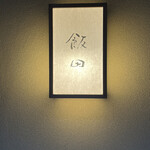


たかぴろりん
4.80
On this day in May 2023, I had the opportunity to visit Iida in Fushimi, Kyoto, a restaurant with a rating of 4.60 on Tabelog and ranked 2nd in the overall Kyoto prefecture ranking. I had always wanted to go there but was disappointed when I found out that new reservations were not available. However, I was invited to visit and I am grateful for that. I couldn't take photos, so I only have a picture of the sign, but all the dishes were incredibly delicious. The Hachiman roll was particularly surprising and delicious, leaving a lasting impression. The delicate yet memorable dishes left a strong aftertaste the next day. I was completely satisfied and would love to visit again if given the chance. The menu I enjoyed that day included various dishes such as abalone with crushed tofu, carp with mugwort noodles, grilled horse mackerel, bonito sashimi, chumaki, young sweetfish, eel with burdock root, soft-shelled turtle stew, sea urchin, a pot of bracken, beef, and Japanese pepper, egg custard for the pot, caramel ice cream with Japanese sugar, and yuzu jelly. #Hard-to-Book Restaurant #Extremely Hard-to-Book Restaurant #Despair-Inducing Reservation Restaurant #Iida #Kyoto Gourmet #Japanese Cuisine #Kyoto #Japanesefood

K-dice
4.60
I was invited by a dear acquaintance to a very special seat and had the pleasure of joining them. The restaurant, Iida, is located right in the heart of Kyoto, and the atmosphere is very calm, almost like stepping into a different world. Last time I sat at the counter, but this time we had a private room, which had a different charming ambiance and view! We started with a toast with beer and were served a drink by the lovely hostess, which marked the beginning of a leisurely Kyoto night. The dishes we enjoyed tonight included: thin bean kudzu tofu with abalone, jellied with thin bean pods, carp and yomogi noodle soup, sashimi of horse mackerel, bonito tataki with garlic and myoga, sea bream sushi wrapped in fragrant bamboo leaves with a pinch of beans, grilled young ayu with wood sorrel vinegar, eel wrapped in lotus leaf, sea urchin and soft-shelled turtle jelly, beef and butterbur hot pot, rice, spicy pickled eggplant, caramel ice cream with Japanese sugar, cherry jelly, and grilled oak rice cake. It was already wonderful last time, but this time it was even more wonderful! I was blown away by the eel wrapped in lotus leaf, which is said to be a specialty of this season, and all the other dishes were incredibly delicious too! The carp soup was so delicious... The food, the drinks, the dishes, the hospitality, everything was top-notch and I can't say anything but that. Such a wonderful time passed by so quickly, leaving only the feeling of longing... I hope to experience such a wonderful night again someday. I am truly grateful for being able to have such a fantastic dining experience that evokes such feelings!




hirokiworld54
4.60
#Favorite Japanese Cuisine in the Universe#May at Iida-san#No photos of the dishes, sorry#The first appetizer is Kudzu tofu with Usui beans and tender simmered abalone#The rich aroma of Kudzu tofu with light bean flavor combined with the simmered abalone is divine#The abalone is tender and fragrant, but the star is the light beans#The texture of the simmered dish was intriguing, maybe Kudzu was involved#Fried carp soup with mugwort noodles, the highlight for me is always the broth#The clear broth, fried carp oil, and sweetness create a unique and delicious flavor#The presentation of the sea bream rice cake roll is like a beautiful art piece#I want to display it#The way Iida-san rolls it is a work of art, and the scent of bamboo leaves enhances the flavor#The spiciness of the simmered butterbur leaves inside is thought-provoking and delicious#The Hachiman roll by Iida-san#Made with burdock root sourced from an old man in Tokushima, a unique expression that only Iida-san can achieve#The burdock root is incredibly smooth, almost like a paste#This burdock root is something else#The harmony with eel is remarkable#Iida-san emphasized that the burdock root, not the eel, is the main ingredient, showcasing his unique perspective#The beef with Sansho pepper and bracken in hot pot broth is sweet#Finish the hot pot with a beaten egg, leaving a bit of Sansho pepper and bracken#The pickled eggplant in mustard is incredibly delicious, every bite is a delight#The rice is from Hokkaido Yumepirika#The theme for May is a collection of Japanese and Chinese poetry#Incredible#Did anyone actually read this until the end?




ジェームズオオクボ
5.00
Iida @ Kyoto City ~ Touching New Burdock
Today, I was fortunate to receive a precious invitation from a friend I am indebted to, to study Japanese cuisine on a valuable seat, in the season when the leaves of the grass and trees flourish, during the period of "Kosan." I am grateful. There are many members of Japanese restaurants and inns, so it is a very valuable opportunity for studying. Since notes were not allowed, I am writing this review based on memory, so please forgive any details.
It started with a fragrant perilla tea. The appetizer was a light edamame tofu, topped with abalone and a jellied dashi made from the pods of edamame. The texture of the kudzu used to solidify it, along with the scent of edamame, was excellent. The carp in the soup was sliced and rolled, then coated with kudzu and fried. According to my friend, the bonito flakes used in the soup were made from bloodless dried bonito, using only the core part. This time, it had a thick texture. The soup bowl used was from a Kyoto artist from the Taisho era, and its condition was superb. It will be sent for repairs when this period of May ends and will return in April. There are fewer artisans now, so it seems to be a nerve-wracking situation.
Next was the sashimi, which was carefully deboned and had a chewy texture. It was served with wasabi and soy sauce. The skipjack tuna was smoked with Kyoto green tea. The skipjack tuna had a moderate amount of fat. It was sandwiched with pounded wild garlic leaves. On top, there was plenty of myoga (if I remember correctly) as a condiment. It was served in a bowl from the fifth generation of Raku.
The sea bream dumpling contained boiled butterbur instead of soy sauce. It also had sweetly cooked inch beans and was beautifully rolled! The string of iris grass wrapped around the dumpling was rolled very beautifully at intervals of just 1 cm, or maybe even a little shorter. I don't think the head chef rolled it, but if it was done by an apprentice, it's even more amazing.
The grilled sweetfish still had four small young sweetfish lined up like carp streamers. It had a fragrant aroma and a soft texture with a hint of bitterness. This dish seems to be suitable for the period of "Kosan." The tade vinegar was also fragrant and unforgettable. It was so delicious that I wanted to drink it.
In the season when the leaves of the grass and trees flourish, it seems to be the period of "Kosan." The Hachiman roll was a dish that the chef decided to master after thinking that the Hachiman roll wasn't that delicious during his eel training days. The way it was rolled was explained to have been done in a way that resembled a decorative sword (weapon) in line with the Boys' Festival in May. It started with the crispy texture of the skin, transitioning to the aroma of eel, and then to burdock. The new burdock from a producer in Tokushima had a melting texture, making the eel and burdock have the same texture, resulting in a melting sensation. I have never had a Hachiman roll like this before, and it was truly moving. I have had a vegetarian dish that used burdock as a substitute for eel, but this was a wonderful dish.
The turtle jelly and sea urchin combination had a rich flavor. The wagyu beef flower pepper hot pot with Kyoto flower pepper and bracken dashi was transformed into a tamago kake gohan (egg over rice). It was served with spicy pickled water eggplant and Hokkaido rice.
The yatsuhashi jelly with mint caramel ice cream had a light texture, and it was a wonderful dish created by the aesthetic eye, sense, and refined technique of Mr. Shinichi Iida. By persevering with quality over quantity, it seems that there is even more quality to be achieved. It was a memorable restaurant where the chef's determination to master his craft resulted in outstanding dishes. In a time when Japanese restaurants and sushi restaurants often rely on high-quality ingredients to create easily understandable dishes, I feel that I had a wonderful experience.



まんおじ
4.90
Payment is cash only. The dishes here have a stable and impressive deliciousness. Carp soup - unique broth. Hagfish - light but flavorful fat. Bonito - amazing aroma. Tai meshi chumaki - the bamboo leaf enhances the flavor. Edamame - unbelievably delicious. Ayu fish - the vinegar sauce with wood buds is a perfect match. Flower sansho beef hot pot - even better with a raw egg. Eel and burdock roll - I want seconds! Soft-shelled turtle ice - great flavor.
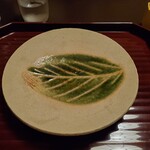



Just.do.it.227
4.50
This is one of the most challenging restaurants on Tabelog GOLD. Unfortunately, photos are not allowed inside, so only the entrance is shown. The dishes here are made with carefully selected ingredients and each one is delicious. If you have the chance to visit, you must go to this restaurant. You never know when the next opportunity will come. It may be a restaurant that you can only visit once in a lifetime. Some of the dishes they serve include:
- Kudzu tofu with thin beans and abalone jelly
- Fried carp with mugwort noodles in a bowl
- Fresh sea bream sashimi from Akashi with watercress
- Bonito tataki with wild garlic, myoga, and mustard
- Red snapper sushi shaped like chimaki with fava beans
- Grilled young sweetfish with tade vinegar
- Eel wrapped in lotus leaf
- Soft-shelled turtle jelly with sea urchin
- Beef and butterbur hot pot with sansho pepper
- Tamajime with hot pot broth
- Rice with dream pheasant
- Spicy pickled eggplant
- Japanese sugar ice cream with candy craft
- Small summer jelly
- Cherries
- Grilled oak rice cake


kokt7
4.90
I visited this popular restaurant in Kyoto, which is known for being difficult to make reservations at, thanks to an invitation from a regular customer. I was able to enjoy the best bamboo shoots, just in time. The first dish was Chinese-style, but the rest were all Japanese. Each dish was beautifully presented and fantastic, just as the restaurant's reputation suggests. The hostess' service was also excellent. It was a private counter party, but the other guests were all wonderful people, making it a great gathering. I would love to visit again if I have the chance.




Zマックス
5.00
The photo of the food is not allowed, so I will describe the exterior and interior. The main dish was bamboo shoots, which had no bitterness and a strong aroma and sweetness. The soy sauce was also excellent. Additionally, they served red snapper shabu-shabu out of season, bringing out the umami flavor beautifully. The presentation was very interesting.


みつごとうさん
4.90
Regular visits to Mr. Iida's restaurant. A lively gathering with friends at the counter. Looking back, 12 years ago, I stumbled upon a quaint pottery shop while wandering around Kyoto. When I timidly peeked inside, I found no pottery displayed, but a woman cleaning the shop who said, "I heard this used to be a tool shop, but now we're preparing to open here." That was Mrs. Iida, the proprietress. And that's how our connection began. Chance encounters are truly mysterious. This time, it was March, my favorite season for clams. But what surprised me was the Moroko dish. I've had Moroko many times at Mr. Iida's, always grilled over charcoal. However, this time, they were already fried before being grilled. Wait, you fry them before grilling? (sweat) Won't they become dry from too much heat? But the carefully grilled Moroko had a crispy head and tender flesh. The cooking was perfect! We enjoyed the best Moroko. Frying before grilling was a new challenge for Mr. Iida. He seemed so pleased to see our surprised expressions at how delicious it was (^_^) It was another night experiencing Mr. Iida's genius. We didn't take any photos that day, so here is a funny comic strip from Mrs. Iida that I received last December! Now, introducing the new hope of Iida, the "ladle edition" ♬ Some parts of the comic are omitted, and there may be some slight overlap.
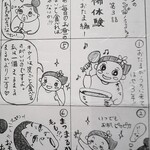



鶏口となるも牛後となるなかれ
4.50
Mr. Iida doesn't speak much. He serves ingredients, cooking methods, and dishes without saying a word, yet manages to impress diners. It's a stark contrast to the style of passionately explaining while guests eat. His silent approach seems to reach a unique level where understanding comes through eating, rather than words. Perhaps it's related to his decision to return his Michelin stars. Everything on this day was top-notch, especially the sea bream. The texture and aroma were outstanding. The casually chosen sake cup turned out to be a Rokuroshi. I truly adore Mr. Iida.

MIKI坊
4.40
<February Menu>
- Simmered sardines with plum and wasabi greens in Tosazu jelly
- Inari-style fugu Shirako with grated turnips in broth
- Red snapper with spicy daikon radish, scallions, and Tosazu vinegar
- Grilled golden eye snapper with aged squid ink
- Ehoumaki roll with conger eel, shrimp, egg, and dried gourd
- Grilled bonito marinated in white miso/sake lees with crispy scales
- Hot pot with soft-shelled turtle and green onions
- Grilled duck with sansho soy sauce
- Sweet shrimp in salted fish roe style with celery and sesame dressing
- Fried white fish cakes
- Soybean mixed rice
- Setoka orange jelly with strawberries
- Snow mochi with chocolate filling
- Matcha
(Note: Photos are not allowed, only the entrance photo is permitted)

kobalog_
5.00
Iida-san, whom I have longed to visit, was truly amazing. I was able to feel the greatness of Iida-san's skills and depth especially during this season, and I am extremely satisfied. The dishes were so delicious that I could eat them every day and I had a happy time. I would love to visit this restaurant again. Thank you for the wonderful meal! :)


けちゃっぷ日和
4.80
[Iida] A restaurant in Kyoto with numerous skilled chefs and foodies, receiving the highest rating from Michelin Guide. The dishes are perfectly balanced and the eggplant was shockingly delicious. The magnificence of the tableware can be felt throughout. The presence and gentle smile of the owner, Mr. Shinichi Iida, exude authority and warmth. It is a place that leaves you with a sense of awe, making you want to visit again someday.




藤崎まり子
5.00
I am always moved by the Tabelog Award 2023 Gold-winning restaurant. I really love this place. I shout my love for it persistently, so please check out my past reviews for more details. This year, the reservation date was January 7th, so I was able to enjoy the extremely rare Nanakusa Kayu, ensuring good health for the year. When I visit Mr. Iida, he always says that the next day will be happy, and I reminisce about how delicious yesterday was. The moments of joy throughout the year can be found here. Reservations for the whole year are already filled up by regular customers, so to go, you need to make friends with someone who has a reservation. The "Omakase Course" includes: - Starting with Umeboshi and Kombu-wrapped Daifuku tea to warm up the stomach. Daifuku tea is a lucky tea passed down from the Heian period to celebrate the New Year and wish for good health. - Drinking O-toso from a lucky O-toso vessel with a depiction of the phoenix and auspicious characters. - Yuba steamed with sea urchin and white miso with lily root. - Tang Mochi and Kue with red and white daikon and carrots. - Finely chopped Kawahagi with special liver ponzu and momiji oroshi. - Sushi of pickled yellowtail that is only available in January, thick grilled tamagoyaki, black bean paste, liver in kumquat honey, miso-pickled daikon, red and white chorogi, shoyu simmered sansho pepper, vinegar-steamed sudachi kama, mashed taro, sea cucumber. - Grilled comparison of Matsuba and Hamazaki crabs over charcoal. - Grilled crab meat and miso in the shell. - Crab soba for palate cleansing. - Anago wrapped in kombu with Kujo negi and yuzu peel. - Nanakusa Kayu, which is only available on this day of the year, is not just ordinary rice porridge when made by Mr. Iida. - Fugu mixed rice. - Rare cheesecake, yuzu jelly, strawberries. - Tempura of dried persimmons with incredibly delicious batter. It was delicious, thank you for the meal. Thank you very much for reading until the end. I really appreciate your support with "Follow," "Like," and "Save the restaurant." I look forward to your continued support. Also, please check out my Instagram. Mariko Fujisaki (@mariko_fujisaki) https://www.instagram.com/mariko_fujisaki/


Email Login